Royal Armory in Madrid. Weapons and Armor Collection of the Spanish Kings
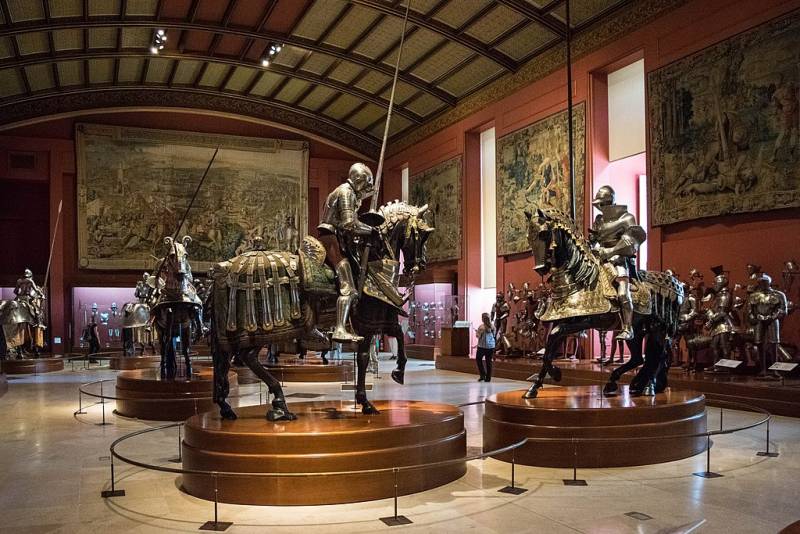
Just a gorgeous exposition of knights on horseback! No glass. From all sides you can take pictures And most importantly, these knights are many ...
notes in the diary - at least the deadlines have passed,
so that you can read these lines again
cane, cards, chess, dry flower,
hidden in the pages of an old book
as a memory of some dear,
but a forgotten moment
and a mirror where with dead fire
dawn trembles in a sunset scarlet circle.
Nail, wineglass, door - the dictate of fate
you have been given obedient slaves
blind and meek servants.
If you leave, they will not save your mark.
They don’t care if you are alive or not.
Jorge Luis Borges. Translation by Vladimir Reznichenko
Military museums of Europe. Today our story about European military museums will be dedicated to the collection weapons and the armor of the Royal Armory in Madrid, which arose from the will of King Philip II. According to this document, the armor and weapons collected in it after his death were forbidden to be sold to pay for the deceased's earthly and spiritual debts, as was customary at that time. The chamber has become the legacy of the future Philip III and his successors and has become an integral part of the treasures of the Spanish crown, and today it is one of the pearls of the Spanish historical heritage.
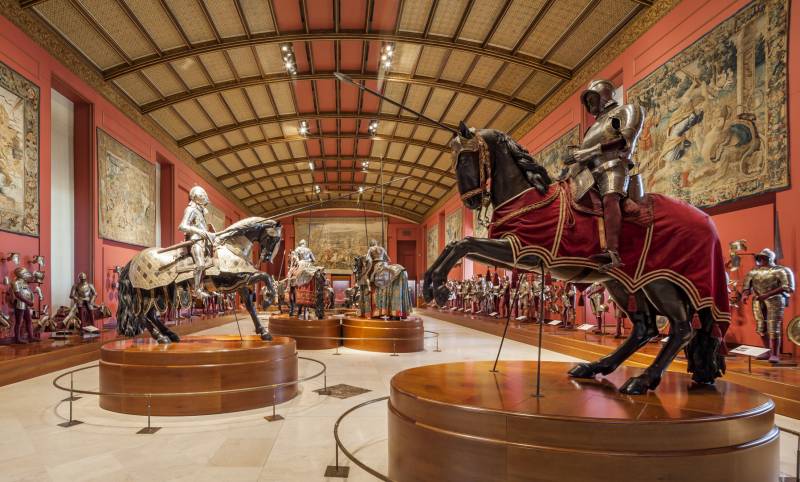
In this photo on the right is a XNUMXth-century spearman, not a knight. He has a bourguignot helmet and there is no full plate leg cover
Philip II decided to keep it for two reasons. Firstly, he well understood that it best demonstrates the strength and power of the Austrian imperial house, and in addition perpetuates the memory of Emperor Charles V, whom he admired. Secondly, this luxurious weapon was of great material value, so it should be preserved at least as capital. Well, his successors only enriched her with their personal acquisitions and military trophies.
The main core of the current collection is the arsenal of Emperor Charles V, which contained the weapons of his father, King of Castile Philip I, and his ancestors: Ferdinand the Catholic and Emperor Maximilian I of Austria. To them, Philip II added his personal arsenal and collection of medieval weapons from the royal treasures of Trastamar del Alcázar de Segovia. The collection covers the entire XVI century, and is international in nature. This is due to the fact that orders for armor and weapons by the Spanish kings were placed mainly in the south of Germany and in the north of Italy - in areas that were controlled by the Spanish crown and where famous families of gunsmiths Helmschmids, Grosschedel and Negroly worked. Also in the royal arsenal fell and trophies. For example, those obtained at the battle of Pavia (1525), Mulberg (1547) or Lepanto (1571), embassy gifts from the Italian dukes of Mantua and Urbino, as well as gifts from Japan sent to Philip II as king of Portugal.
Although the arsenals of Charles V and Philip II brought glory to the collection, the reign of Philip III and Philip IV (1605-1621-1665) also enriched it with products of the 1604th century - diplomatic or family gifts. These include, for example, gifts that were sent in 1614 and 1603 by King Charles I of England from England and Duke Carl Emanuel I of Savoy in XNUMX.
During the reign of Philip IV, the armor had already lost all value, but they continued to be given as souvenirs, in particular, plate sets donated to him by his aunt, infante Isabella Clara Eugenia, the governor of the Netherlands, and his brother, cardinal infante don Fernando, governor Milan. The reign of Philip III and Philip IV increased the collection of firearms and knives, and among the latter there were many samples that were forged in the city of Toledo.
In 1884, a fire destroyed the arsenal building, built in 1560 by Philip II. Alfonso XII (1857-1874-1885) ordered the construction of his current building, the work on which was completed after his death at the behest of his wife, Queen Regent Maria Cristina de Habsburg.
So the collection of the Royal Armory in Madrid is a real treasury of weapons, which collected a lot of absolutely stunning examples of armor and weapons. Well, now let's get acquainted at least with some of them ...
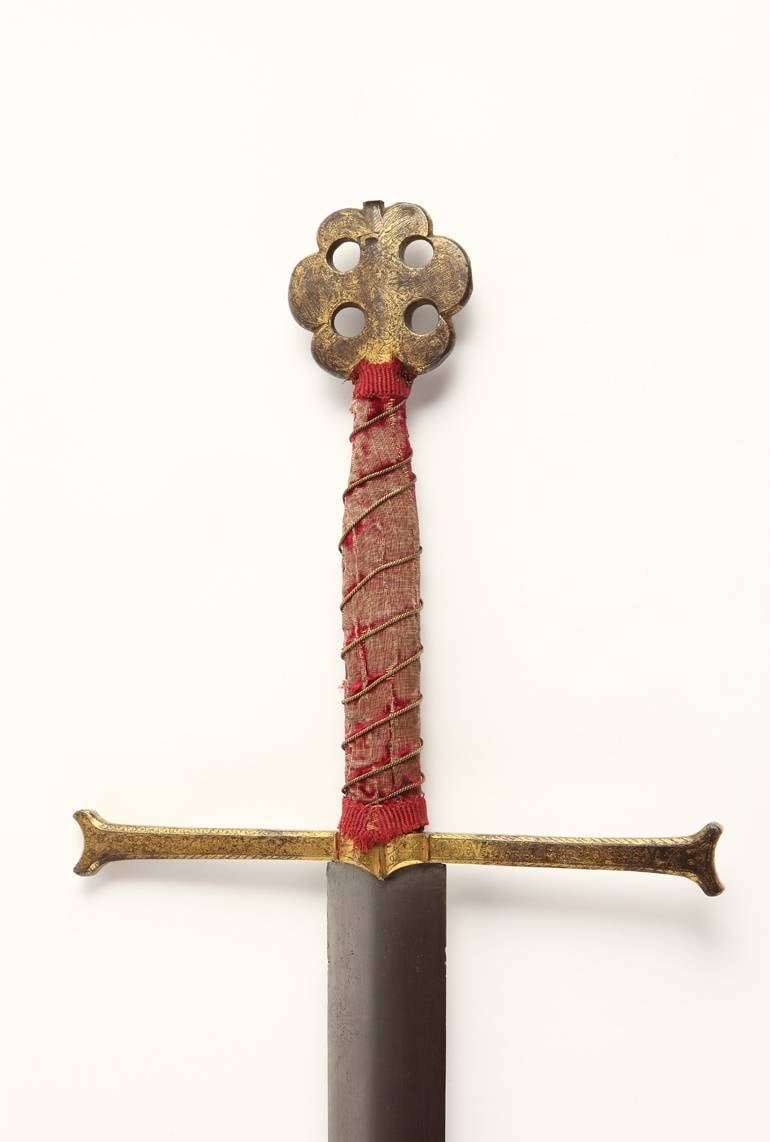
The ceremonial sword of the Spanish monarchs. Around 1490. Length 134 cm. Crosshair width 27 cm. Weight 1835 g. Blade with almond-shaped section. The top is decorated with an image of a bunch of arrows (obverse) and emblems of Queen Isabella I of Castile and Ferdinand II of Aragon. respectively. On the obverse of the crosshair is the motto “TANTO MONTA” (“Double Support”), which belonged to Ferdinand, and on the reverse of the crosshairs there is an appeal: “MATER DEI ME MEMENTO MEI” (“Mother of God Remember Me”). In the inventory list of the Royal Armory of 1594, where he, respectively, is described as "An old sword in the arm is wide." Until the 1488th century, it was used in court ceremonies, such as knighting, oaths, or during the entry of monarchs into cities. In this case, the sword was carried in front of the royal motorcade with its tip pointed up. The privilege of wearing it belonged to Count Oropes since 1, when Ferdinand II granted it to Ferdinand Alvarez de Toledo, XNUMXst Earl of Oropesa
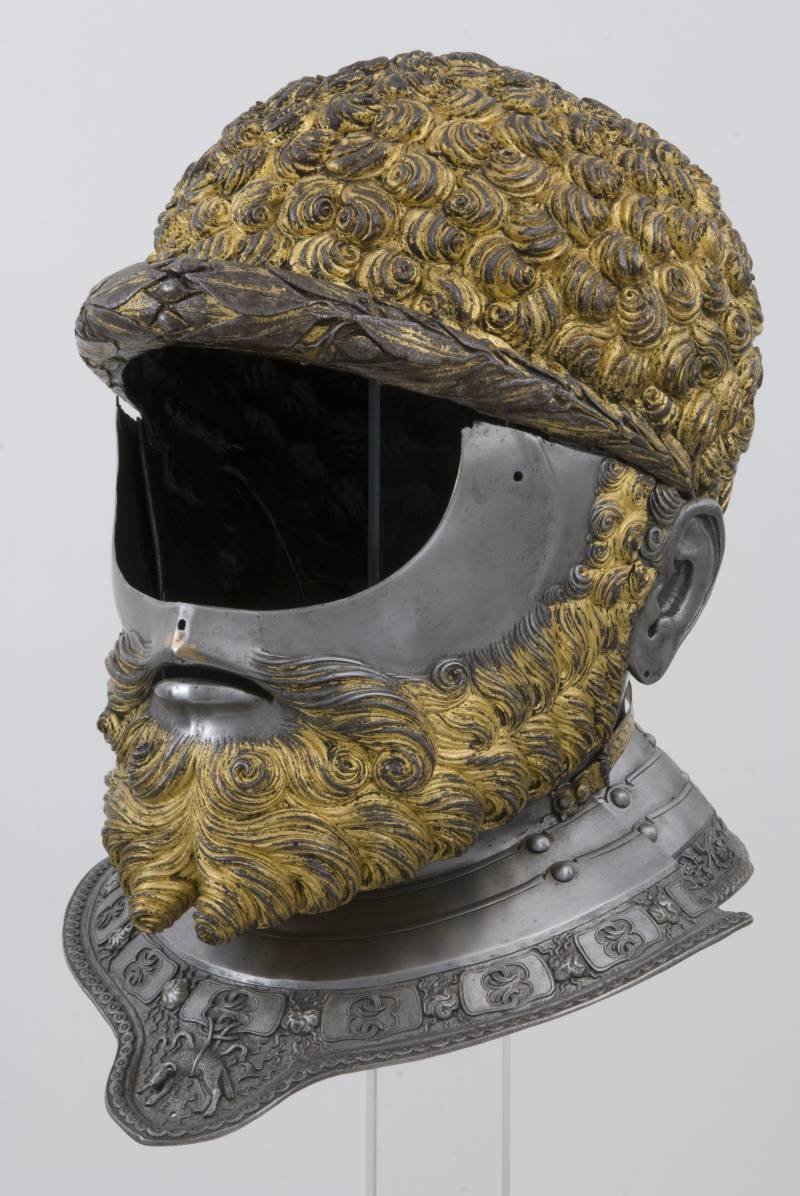
Bourguignot helmet of Emperor Charles V. Work of Filippo Negroli (1510-1579). Year of manufacture 1533. Weight: 3600 g. Helmet is one of the masterpieces of Renaissance art. The work of Milanese Filippo Negroli, considered the most outstanding figure of the XVII century for the high artistic and technical quality of his work and the rethinking of classical antiquity. Curly hair on the head masterfully connects with a beard on the chin of the helmet, shining with gold against the background of polished metal. These helmets have been known since the 1532th century BC, but they had a mask with eyes and a nose that completely hid their faces. The helmet of Charles V was also supposed to have a similar mask, as indicated by three holes and a small protrusion located above the lip. But for some reason it was not made. The helmet had a predecessor: a helmet forged by Filippo Negroli himself for Francesco Maria della Rover, Duke of Urbino, in XNUMX, which is currently kept in the Vienna Armory of the Castle of Hovburg
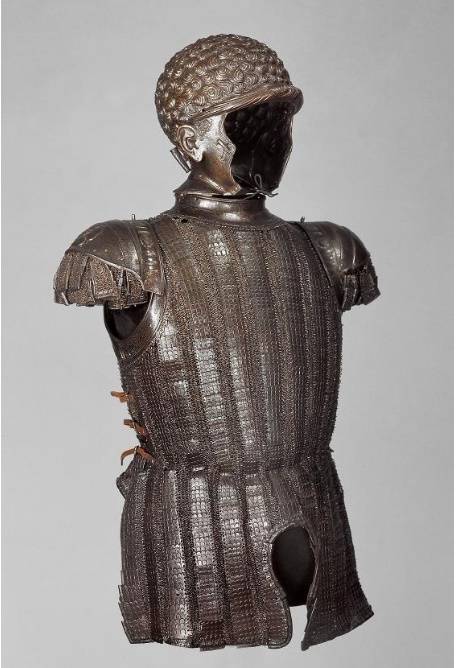
Armor and helmet of Maria della Rovere, Duke of Urbino (1490 - 1538), work by Filippo Negroli (Vienna Armory)
As a lover of exclusive weapons, the emperor also wanted to have a similar helmet. According to the agreement, Filippo Negroli was obliged to improve the helmet of the Duke of Urbinsky by adding a chin to the cheeks and gilding “hair on his head and beard”. In addition, the order of the Golden Fleece had to be depicted on the gorget of the helmet. On the helmet there is an inscription: • IAC • PHILIPPVS • NEGROLVS • MEDIOLAN • FACIEBAT • M • D • XXX • III (Milan Jacopo Filippo Negroli did this in 1533). As a result, Charles V appeared to his subjects as a classic antique hero, and we can conclude that the knightly armor of this time for noble people became something like very expensive and prestigious clothes, the fashion for which was constantly changing.
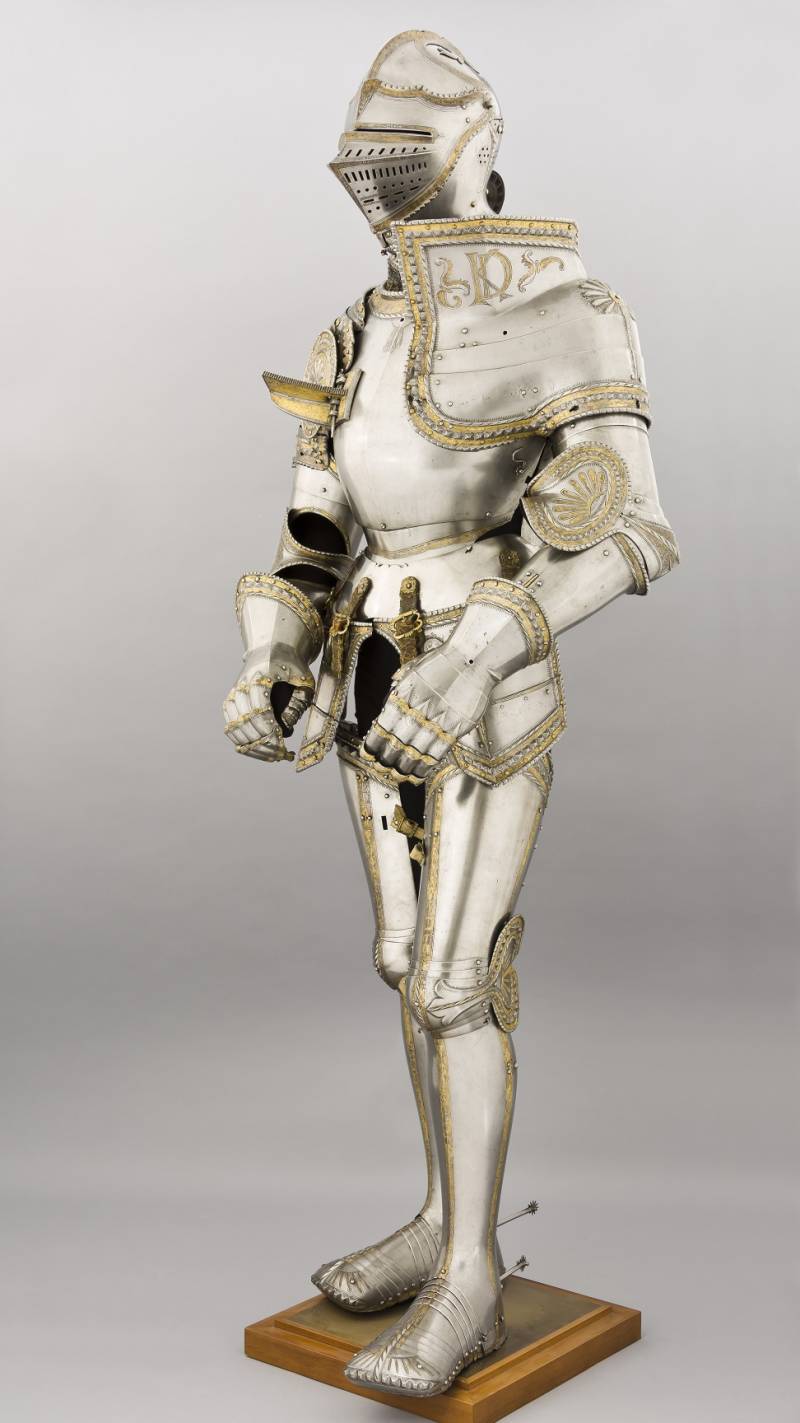
Armor of King Charles V. Work of the master Coleman Helmschmid (1470-1532), Augsburg, circa 1525. This armor is one of the most famous in the Royal Armory of Madrid. This is part of the headset known as KD by the initials that are visible on its left shoulder, following an ancient tradition according to which the armor received its own names depending on their decoration. The use of initials was aimed not only at establishing the identity of its owner, but also associated with the traditions of antiquity. The most striking example is this armor, since the initials of KD mean Carolus Divus, that is, Charles the Divine - a title characteristic of Roman emperors. Coleman made it around 1525 when he defeated Francis I at the Battle of Pavia, and in 1526 he married Isabella of Portugal. When Charles V entered Seville on the occasion of his wedding, Divus Carolvs was inscribed on a triumphal arch, and then it was used many times throughout Europe. Since Karl, then certainly Divus!
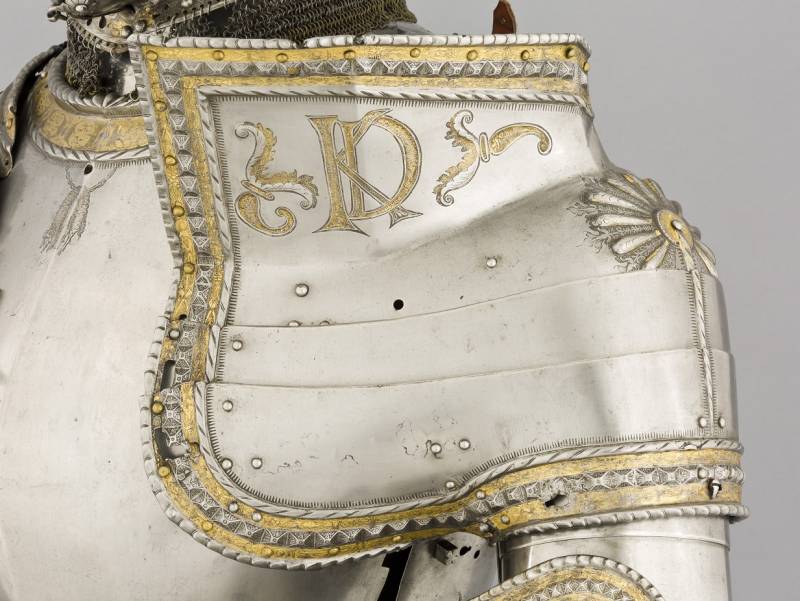
The necklace also depicted a necklace of the Order of the Golden Fleece, founded in 1430 by Philip the Good (1419-1467), the Duke of Burgundy and the great-grandfather of the emperor, for the glory of God, and the defense of the Christian faith and the brotherhood of the knights, as it was the most honorable award of the era of chivalry
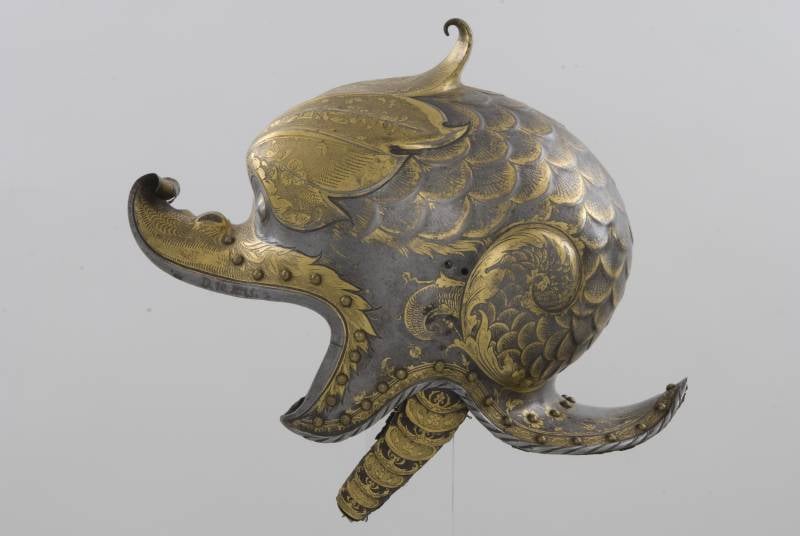
Another fantastic bourguignot in the shape of the head of a dolphin emperor Charles V. Master Colman Helmschmid (c. 1470-1532), Augsburg, c. 1530. Weight 1705. At that time, the Dolphin was considered a good adviser, a symbol of Christ, the protector of people and the guarantor of immortality.
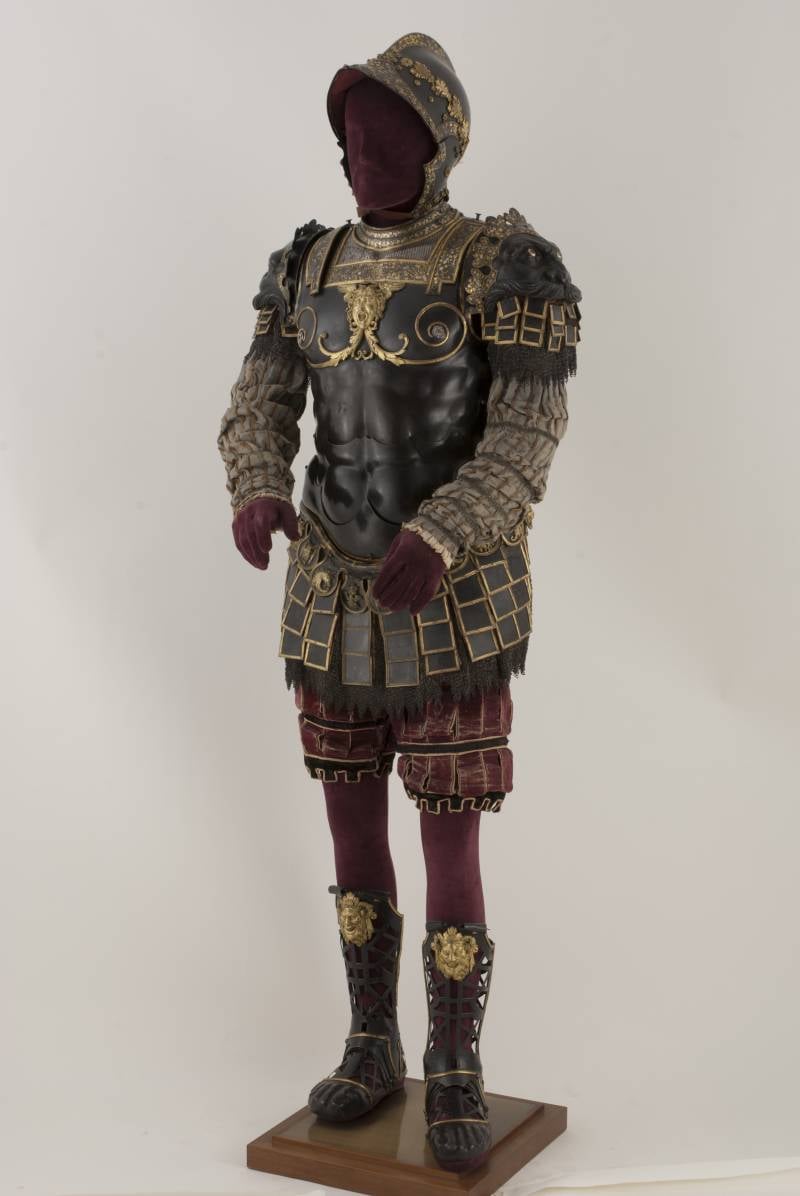
The famous Roman armor, Giobaldo II della Rovere, Duke of Urbino (1514-1574), transferred to Philip II in gratitude for the award of the Golden Fleece Order. Master Bartolomeo Campi (? -1573), Pesaro. C. 1546. According to Campi, work on this armor took two months. It has the following inscription: BARTOLOME • CAMPI • AVRIFEX • TOTIVS • OPERIS • ARTIFEX • QVOD • ANNO • INTEGRO • INDIGEBAT • PRINCIPIS • SVI • NVTVI • OBTEMPERANS • GEMINATO • MENSE / PERFEC / PIСАВRI ANNIOM • ANNeo • ANNО • ANNО • ANNО • , jeweler, author of the work, finished it two months later, obeying the wishes of his prince, even when he would have needed a whole year / Pesaro, 1546). On the back, he repeats his initials • B • C / • F • (Bartholomeus Campi Fecit), while on one of the pieces of the skirt, he inserts the Greek inscription IOΛBIOS MNǑSΛBIOS (“Happy and prosperous”)
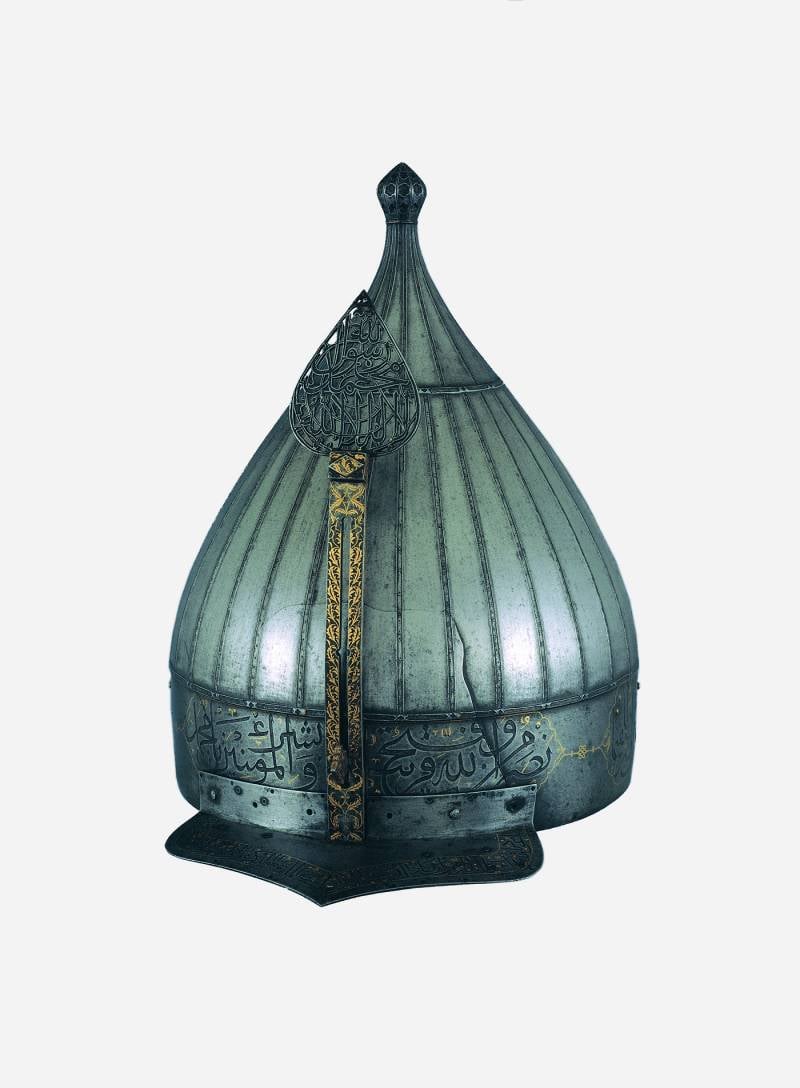
Turkish helmet of Ali Bach, Turkish Admiral fleet at the battle of Lepanto. Height 30 cm. Width 22 cm. Weight 1570 g. Came to the Royal Armory in 1582 as a trophy. Currently, he has lost some of his former splendor, especially due to the lack of headphones decorated with rubies, turquoise and diamonds, which were absent at the end of the 1594th century. Meanwhile, it is known that it had thirty rubies, depicting flowers of five and six petals, which is currently visible in the places where they were. In addition, its original appearance was clearly documented in the inventory of the Royal Armory of 1603-XNUMX.
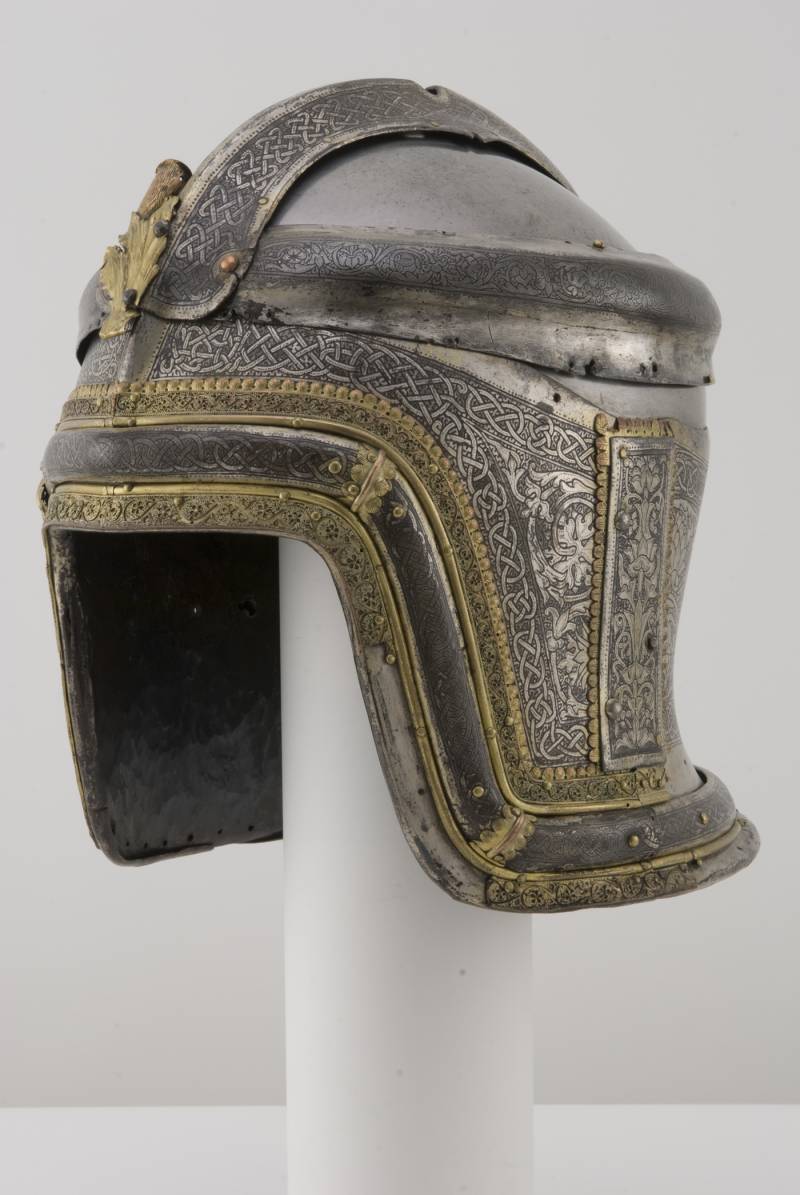
Helmet of Philip I the Fine. Master Filippo Negroly, c. 1495-1500. Height 24,5 cm. Width 21,5 cm. Weight: 3560 g
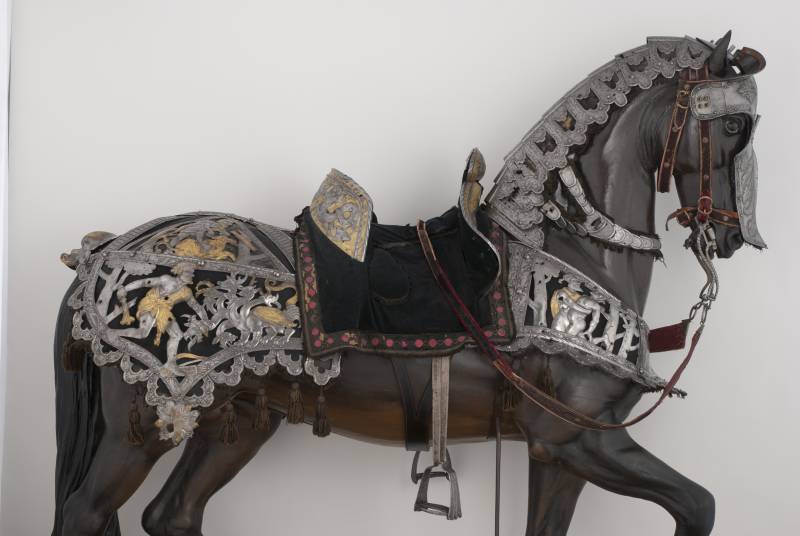
Horse armor by Cohlman Helmschmid (c. 1470-1532), Augsburg, circa 1517-1518. Probably belonged to Emperor Maximilian I of Austria. Biblical tradition and classical mythology intertwined in it. Engraved, chased, carved jewelry with rich gilding stood out effectively against the backdrop of raspberry fabric
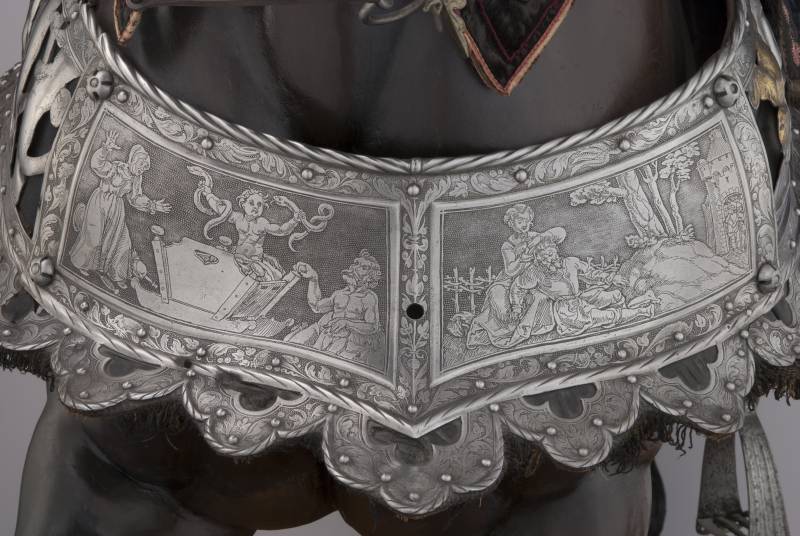
Breastplate: The right half is dedicated to Hercules, starting with the scene in which the hero kills the snakes sent by the Hero or Juno when he was eight or ten months old. Then three of his twelve exploits are shown: the fight with Antei, with the Lernean hydra and the Cretan bull. On the left side is shown story biblical samson. On the front of the bib, Delilah cuts his hair, in which was his incredible strength. He then knocks down the columns of the temple to destroy the Philistines, carries the gates of the city of Gaza, and fights the lion. Kruper armor ends with the head of a dolphin, alluding to the power of long hair, in this case, ponytail
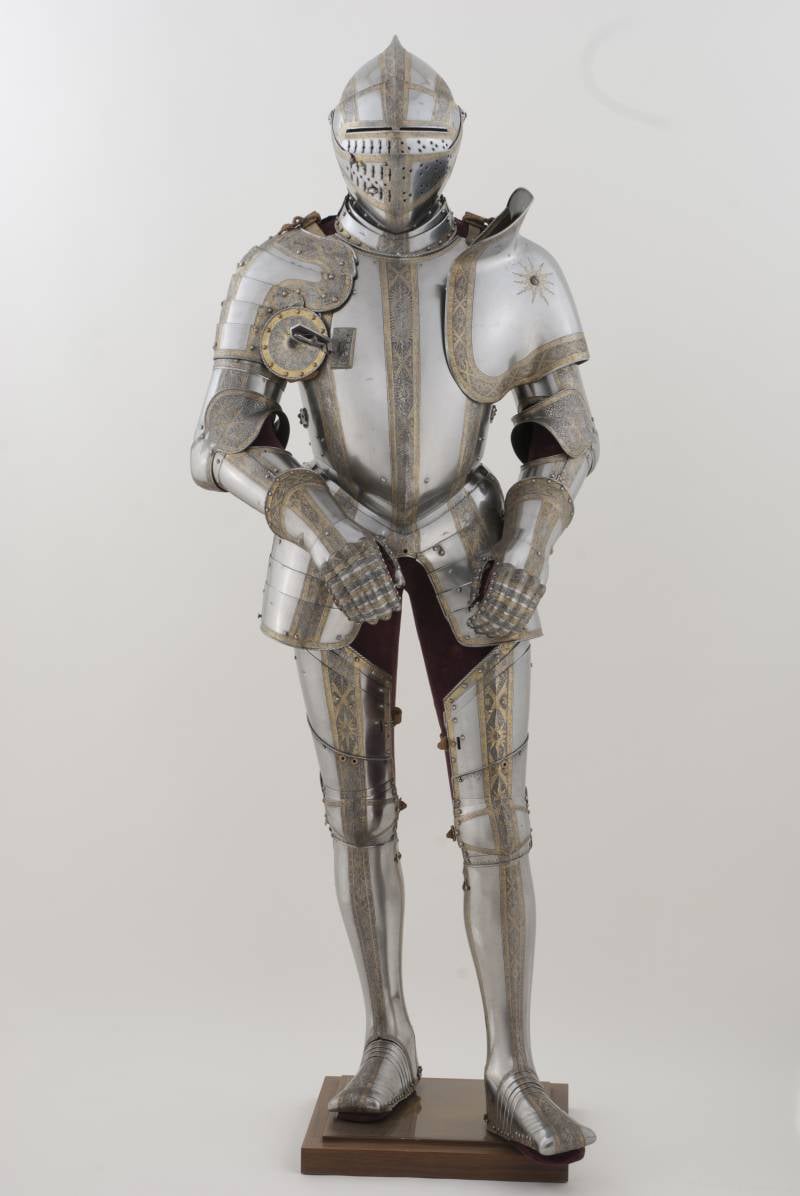
The armor of Philip II (1527, 1556-1598), the work of Wolfgang Grosschedel (1517-1562), Landshut, 1551. The gunsmith became his favorite instead of Desiderius Helmschmid, the family armor of the Spanish royal house on the paternal side, who made his first armor for Prince Philip. But then the master didn’t please Philip, and he began to order armor from Grosschedel. In this “armor”, Philip II six years later won his first military victory as king, winning the battle of San Quentin on August 10, 1557, on the day of San Lorenzo. From then on, this armor will always be associated with this victory, in honor of which he ordered the construction of the Royal Monastery of San Lorenzo de Escorial
Author's note: photos from the Royal Armory website in Madrid are freely available.
To be continued ...
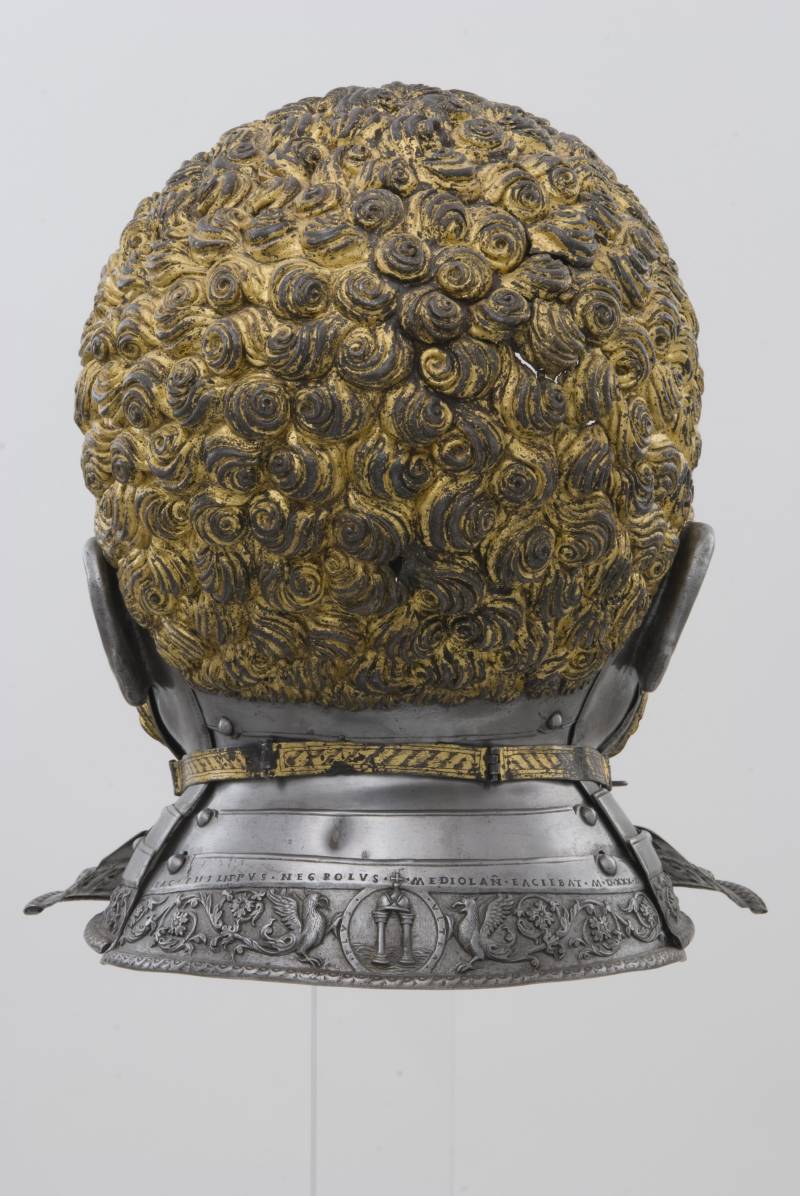
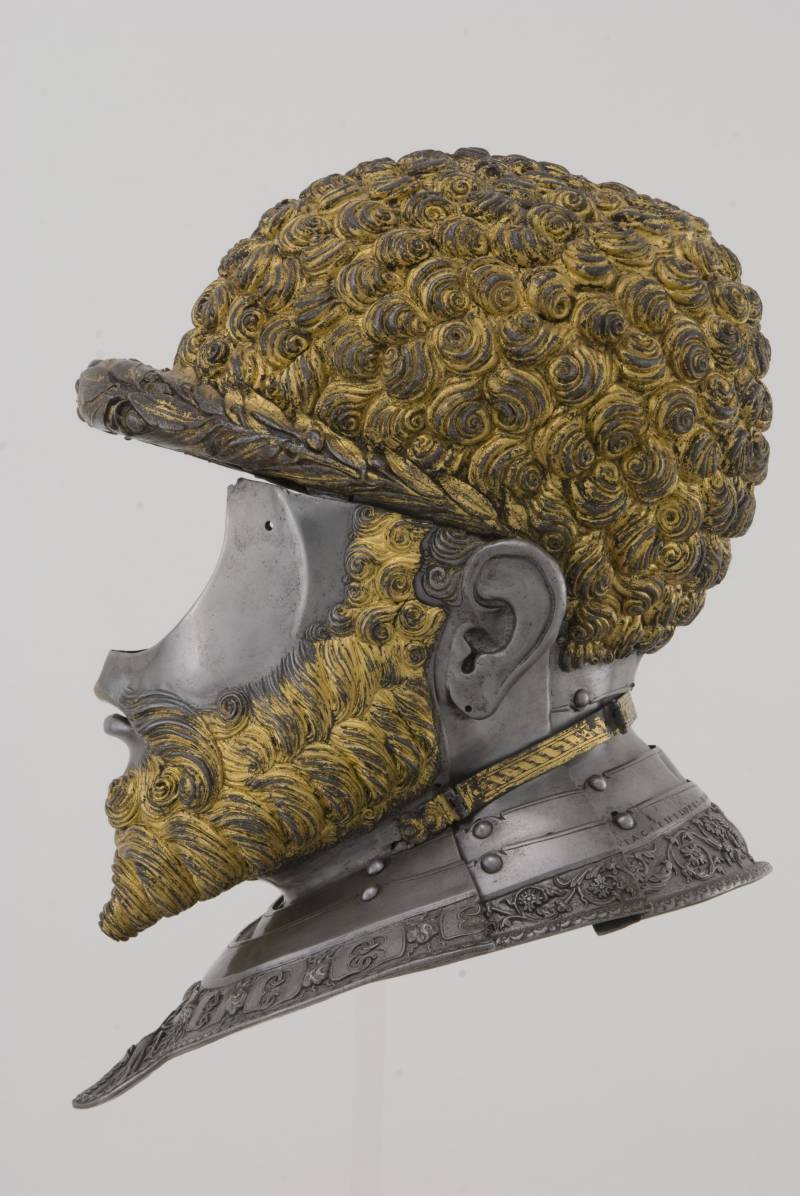
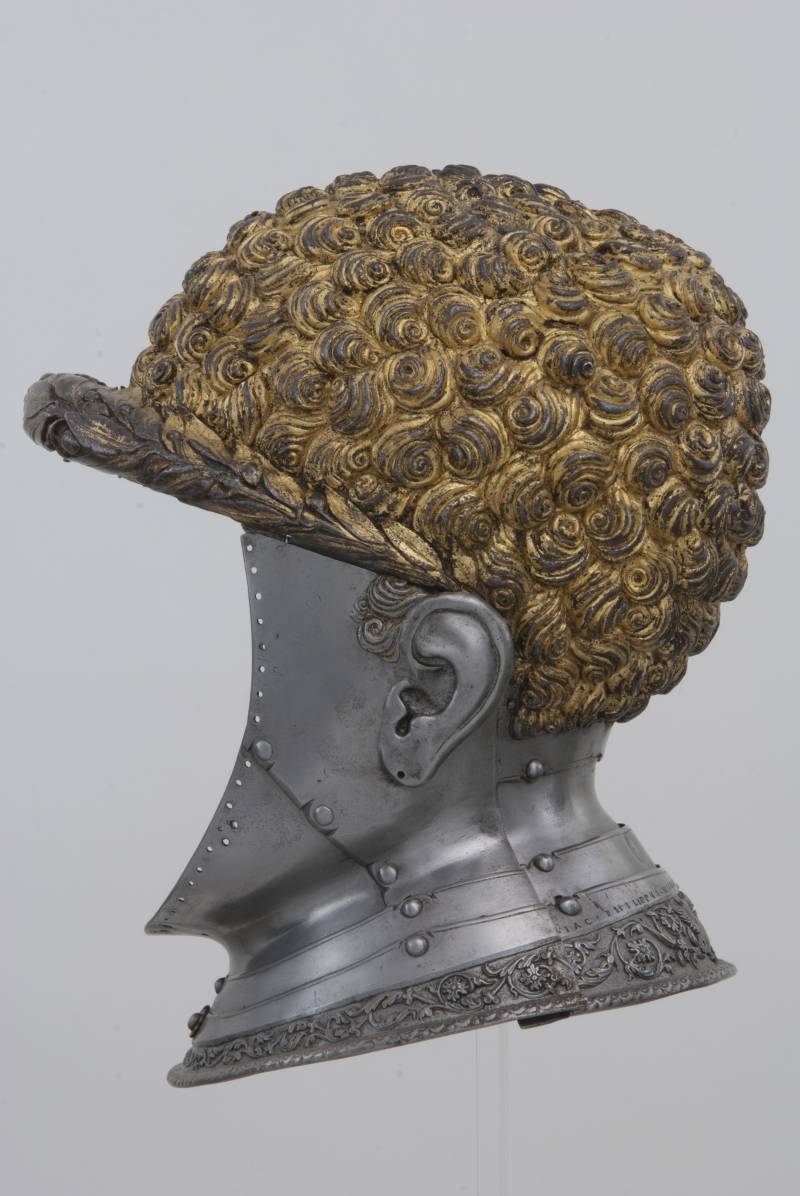
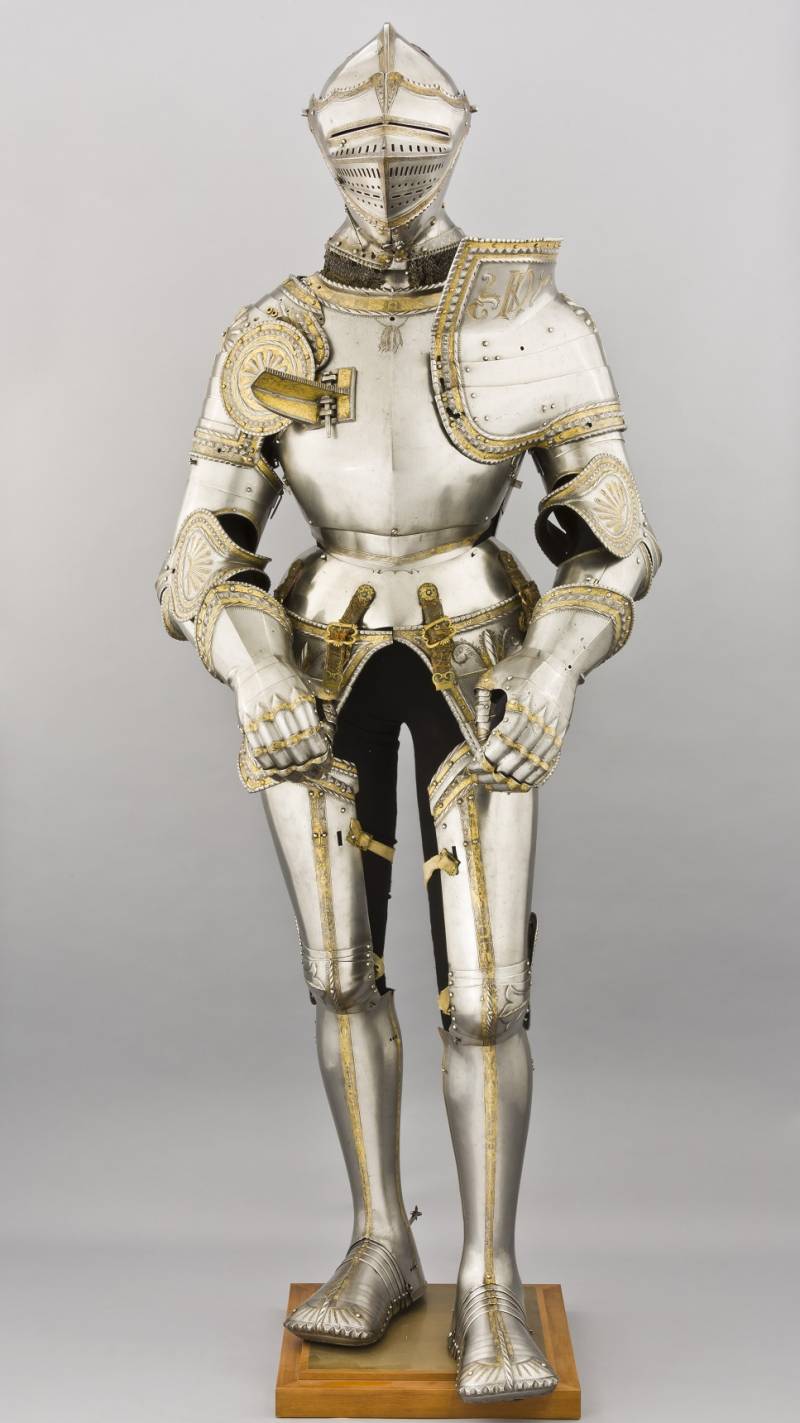
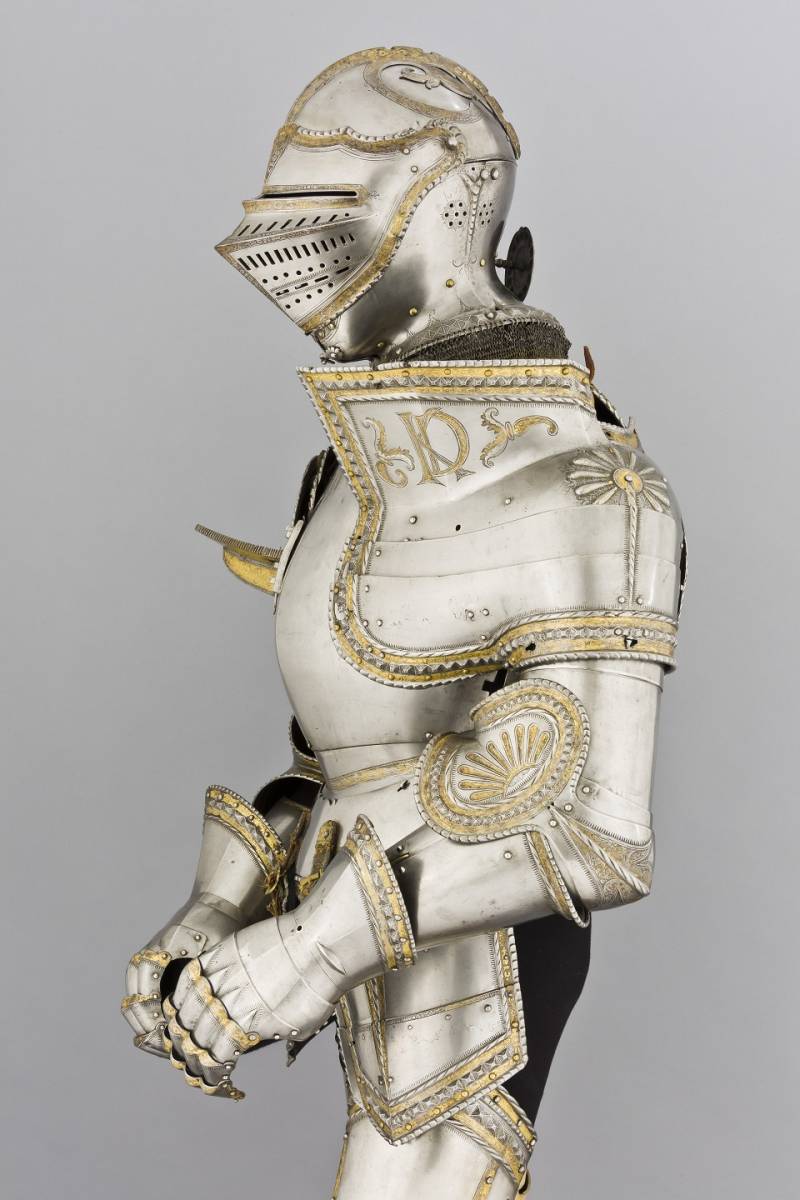
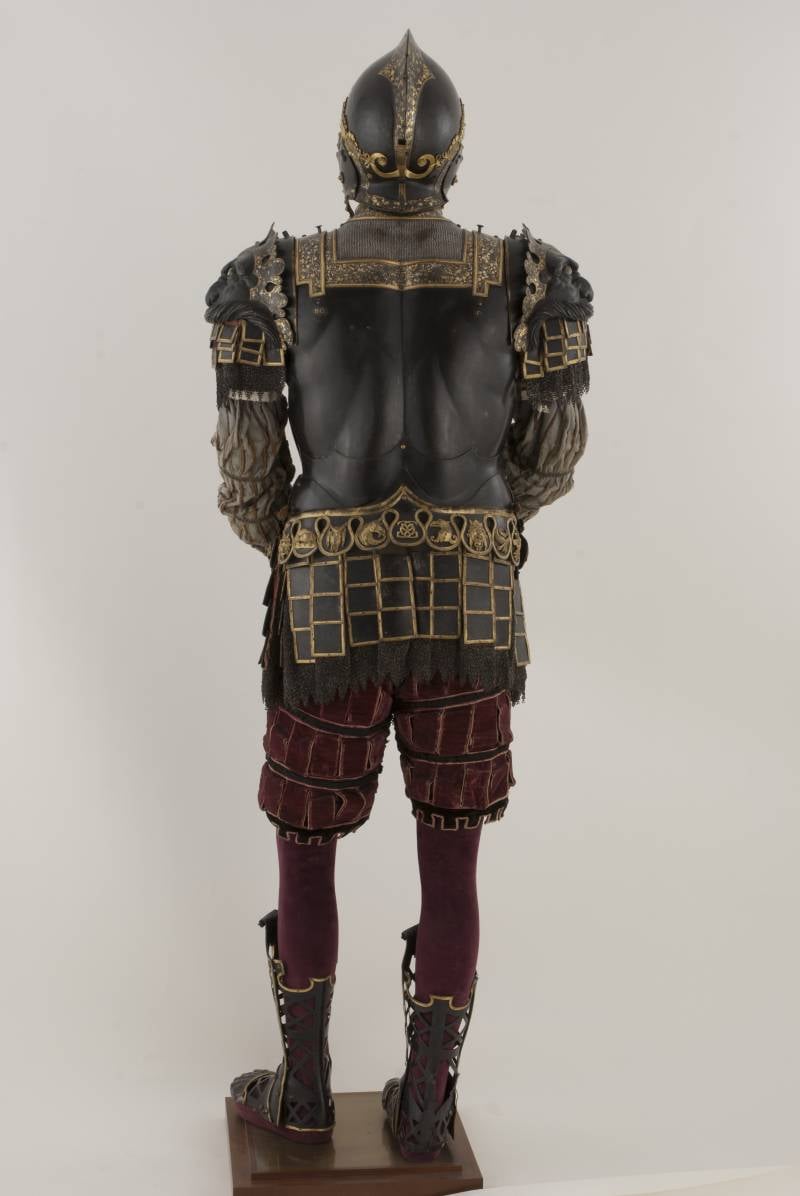
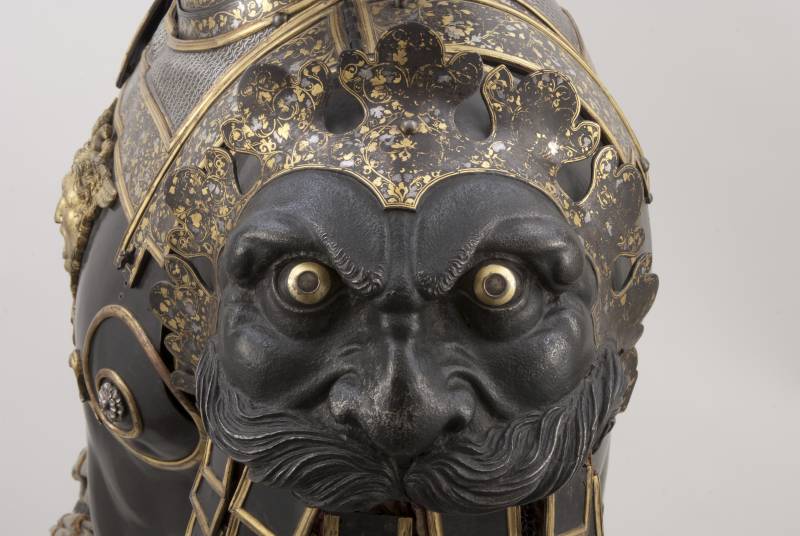
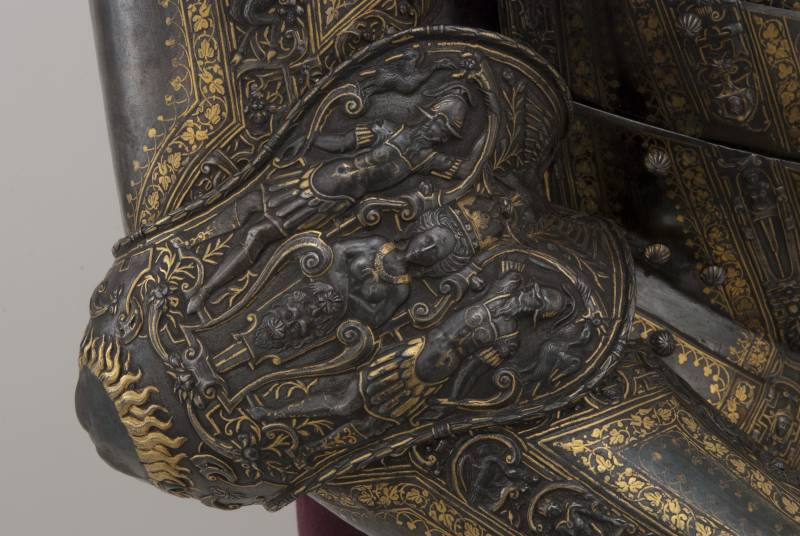
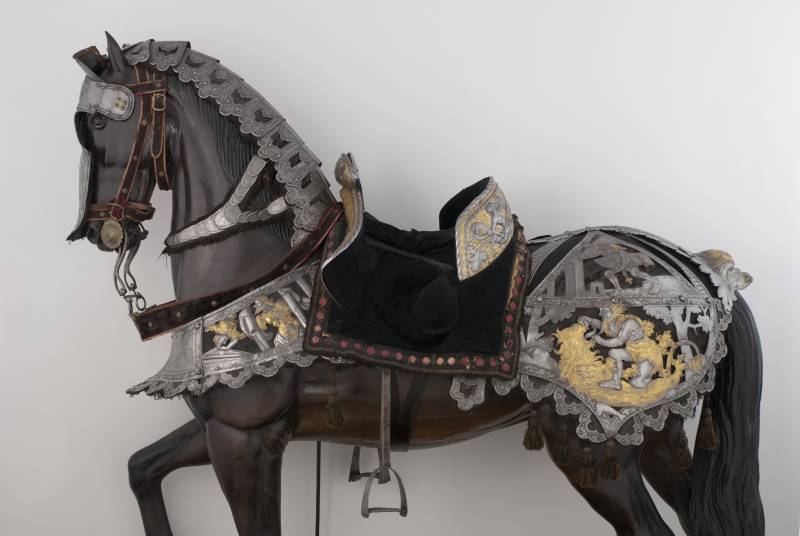
Information